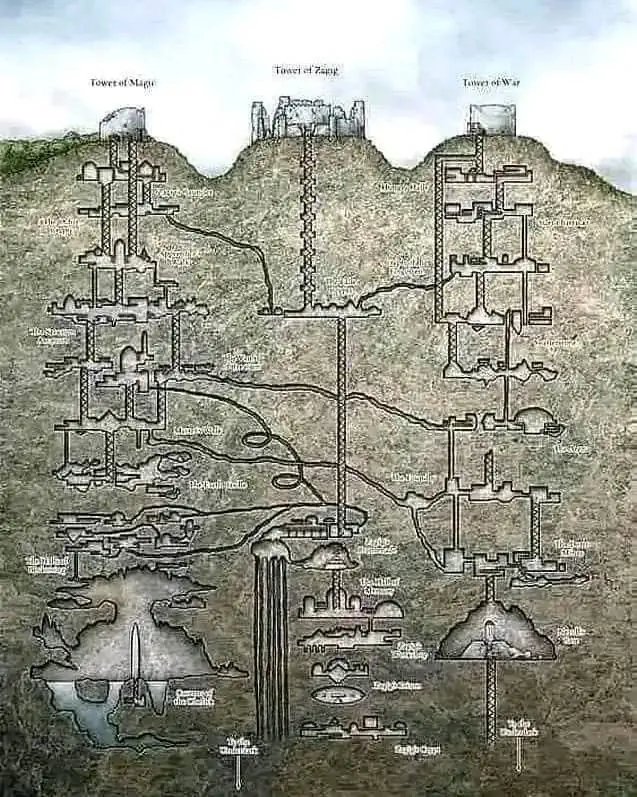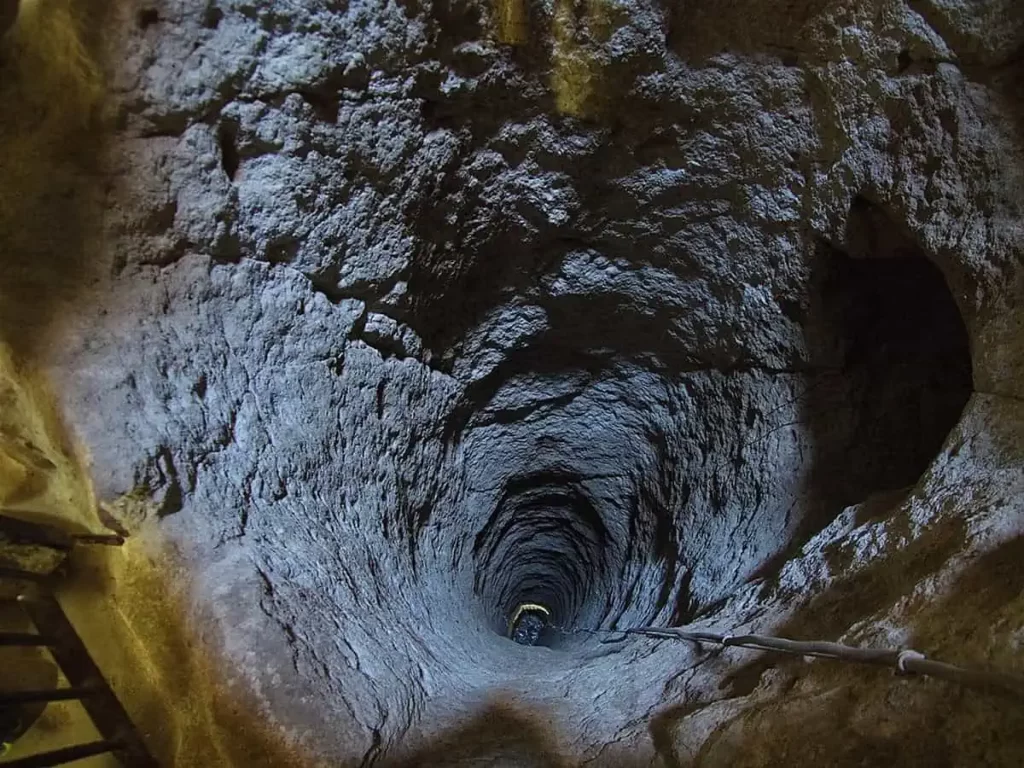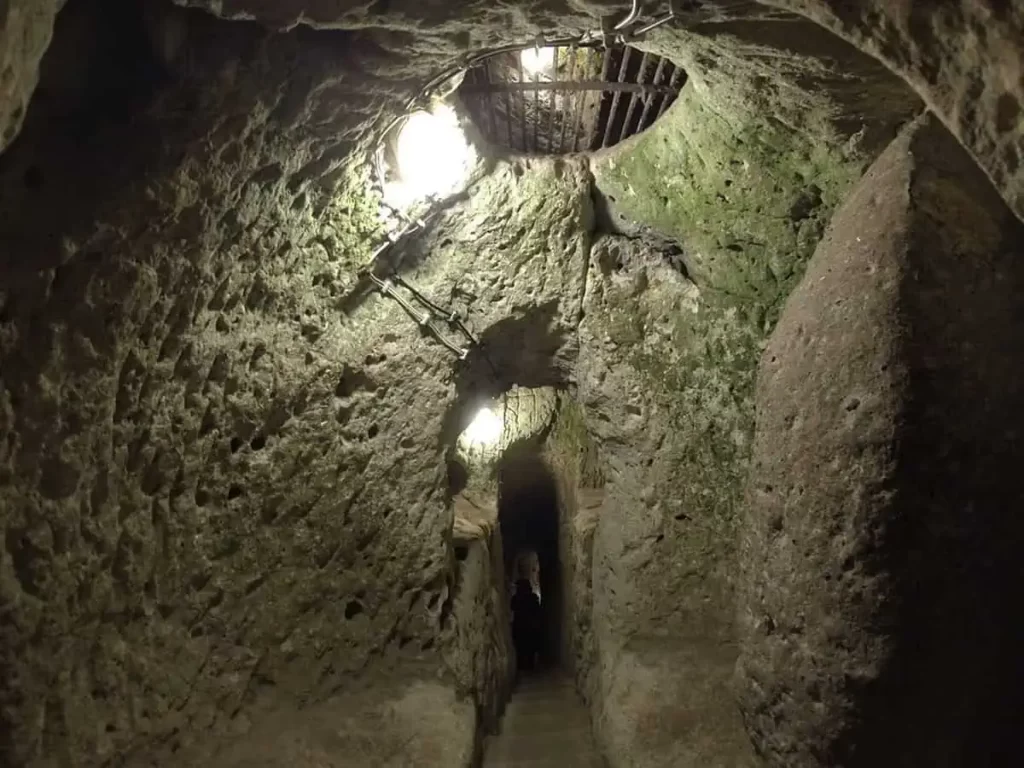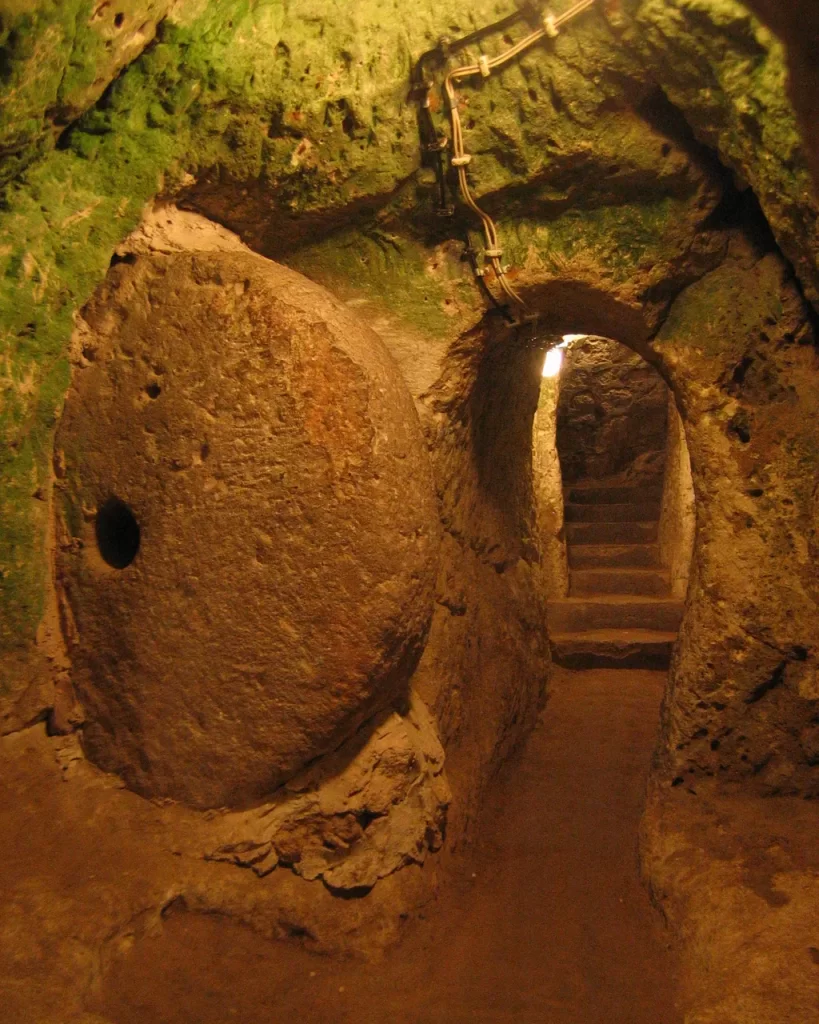Beneath the enchanting landscape of Turkish Cappadocia lies a hidden world, shrouded in mystery and history. The Derinkuyu underground complex, a subterranean city carved into the soft volcanic rock, is a testament to human ingenuity and survival. This remarkable labyrinthine structure, one of the most exceptional archaeological discoveries of our time, offers a unique glimpse into the depths of ancient civilization. In this article, we embark on a journey to unveil the secrets of Derinkuyu, shedding light on the history, purpose, and extraordinary features of this subterranean marvel.

The Origins of Derinkuyu
Derinkuyu, which means “deep well” in Turkish, is located in the Cappadocia region, known for its surreal geological formations, such as fairy chimneys and cave dwellings. This underground complex is believed to have been constructed during the Byzantine era, around the 7th to 8th centuries AD, although some sources suggest it might date back as far as the Hittite period (circa 1600-1200 BC).

Purpose and Design
The primary purpose of Derinkuyu was defensive in nature. It was designed as a refuge and hiding place during times of conflict and invasions. The Cappadocia region has a long history of territorial disputes and invasions, making it necessary for the inhabitants to have a secure sanctuary. The underground city could accommodate thousands of people, offering them protection against marauding armies, hostile forces, and natural disasters.
The city’s design is nothing short of astonishing. It features a complex network of tunnels and chambers spread across multiple levels, with some reaching a depth of up to 85 meters (280 feet) underground. To ensure sustainability, vertical ventilation shafts and a sophisticated system for providing fresh air were incorporated, along with wells for access to groundwater. An intricate series of tunnels connects various rooms and provides efficient transportation within the city.

Key Features of Derinkuyu
- Multiple Levels: Derinkuyu consists of at least eight known levels, though it’s believed there may be even more yet to be explored. Each level served specific functions, including living quarters, stables, kitchens, wineries, storage areas, and chapels. Some levels were reserved for agriculture, with elaborate systems for cultivating food in the darkness below.
- Rolling Stone Doors: To protect against intruders, massive stone doors were installed at the entrances to the city. These doors could be rolled shut from the inside and were virtually impenetrable when locked.
- Religious and Social Spaces: The underground city contains several places of worship, including a church with a baptismal font, indicating a strong Christian influence in its history. There are also communal areas, such as meeting rooms, which were likely used for social gatherings.
- Defense Mechanisms: Strategically placed boulders, shafts for pouring hot oil, and hidden stone-carved passages provided additional layers of defense, ensuring that invaders would encounter deadly traps if they attempted to penetrate the city.
- Water Sources: Derinkuyu had wells and underground rivers, ensuring a consistent water supply for its inhabitants, while the ventilation system allowed for the circulation of fresh air.
Mysterious Abandonment
Derinkuyu remained in use until the Ottoman period. However, it was eventually abandoned, and its existence became a closely guarded secret. Many theories surround the reasons for its abandonment, including changes in population, improved safety conditions on the surface, or the simple fact that it was no longer needed for protection.

Rediscovery and Preservation
The Derinkuyu underground city was rediscovered in the 1960s by a local resident who stumbled upon a hidden room. Since then, efforts have been made to preserve and open parts of the complex to the public. Visitors from around the world now have the opportunity to explore the depths of this underground marvel, shedding light on its enigmatic history.
Conclusion
The Derinkuyu underground city in Turkish Cappadocia is a remarkable testament to human adaptability and survival. Its intricate design, ingenious defense mechanisms, and the mystery of its abandonment make it a captivating archaeological wonder. The underground complex is not only a testament to the historical significance of the region but also a symbol of the tenacity of humankind in the face of adversity. Derinkuyu invites us to peer into the past, to discover a history that remained hidden for centuries, and to ponder the challenges and solutions of ancient civilizations that thrived beneath the Earth’s surface.
